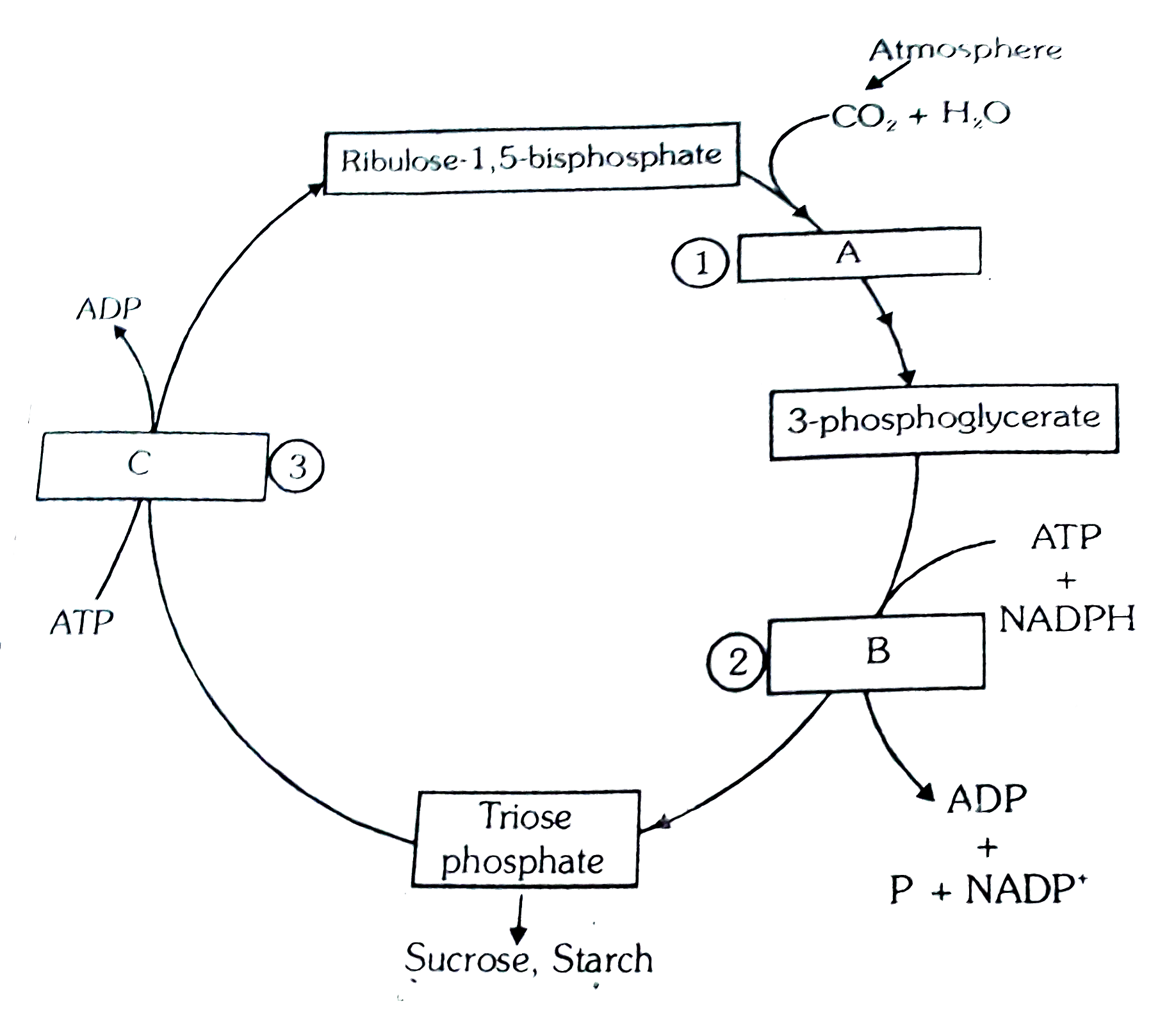In Calvin cycle, to form one molecule of glucose how many number of ATP and NADPH molecules are utilized?
12ATP and 9NADPH
6ATP and 4NADPH
18ATP and 12NADPH
20ATP and 24NADPH
The correct Answer is:C
To determine how many ATP and NADPH molecules are utilized in the Calvin cycle to form one molecule of glucose, we can follow these steps:
1. Understanding the Calvin Cycle: The Calvin cycle is a series of biochemical reactions that take place in the stroma of chloroplasts in photosynthetic organisms. It is responsible for fixing carbon dioxide and converting it into glucose.
2. Carbon Fixation: In the first step, carbon dioxide (CO2) is fixed by ribulose bisphosphate (RuBP) in the presence of the enzyme ribulose bisphosphate carboxylase/oxygenase (Rubisco), resulting in the formation of 3-phosphoglycerate (3-PGA).
3. Reduction Phase: The 3-PGA molecules are then reduced to glyceraldehyde-3-phosphate (G3P) using ATP and NADPH. For every 2 molecules of 3-PGA formed, 2 ATP and 2 NADPH are consumed.
4. Regeneration of RuBP: The G3P molecules are used to regenerate RuBP, which requires additional ATP. Specifically, for every G3P molecule that is converted back to RuBP, 1 ATP is used.
5. Calculating for One Glucose Molecule:
- To form one molecule of glucose (C6H12O6), six carbon atoms are required. Since each turn of the Calvin cycle fixes one carbon atom (from one CO2), the cycle must turn 6 times.
- Each cycle uses 3 ATP and 2 NADPH. Therefore, for 6 cycles:
- ATP: 6 cycles × 3 ATP/cycle = 18 ATP
- NADPH: 6 cycles × 2 NADPH/cycle = 12 NADPH
6. Final Answer: Thus, to form one molecule of glucose, a total of 18 ATP and 12 NADPH molecules are utilized in the Calvin cycle.
Summary:
To form one molecule of glucose in the Calvin cycle, 18 ATP and 12 NADPH are required.
---
- To form one molecule of glucose (C6H12O6), six carbon atoms are required. Since each turn of the Calvin cycle fixes one carbon atom (from one CO2), the cycle must turn 6 times.
- Each cycle uses 3 ATP and 2 NADPH. Therefore, for 6 cycles:
- ATP: 6 cycles × 3 ATP/cycle = 18 ATP
- NADPH: 6 cycles × 2 NADPH/cycle = 12 NADPH
To form one molecule of glucose in the Calvin cycle, 18 ATP and 12 NADPH are required.
Topper's Solved these Questions
Similar Questions
Knowledge Check
During Krebs cycle one molecule of glucose given at net yield of
A4 NADH2B6 NADH2C8 NADH2D10 NADH2During fixation of one molecule of CO2 by C3 plants, number of ATP and NADPH_(2) required are
A3ATP and 2NADPH2B5ATP and NADPH2C12 ATP and 12NADPH2D2ATP and 3 NADPH2
To generate 1 molecule of glucose, how many turns of Calvin cycle are needed?
View SolutionFor two molecules of glucose, glycolysis uses and produces ATP molecules
View SolutionFor synthesis of a molecule of glucose, the requirement of ATP and NADPH is respectively
View SolutionObserve the given figure of Calvin cycle and ifnd the name of steps and number of ATP and NADPH utilised in them for one molecule of CO2

View SolutionIn photosynthesis , for synthesis of one mole of glucose number of ATP and NADPH2 required is
View SolutionIn photosynthesis , for synthesis of one mole of glucose number of ATP and NADPH2 required is
View Solution
